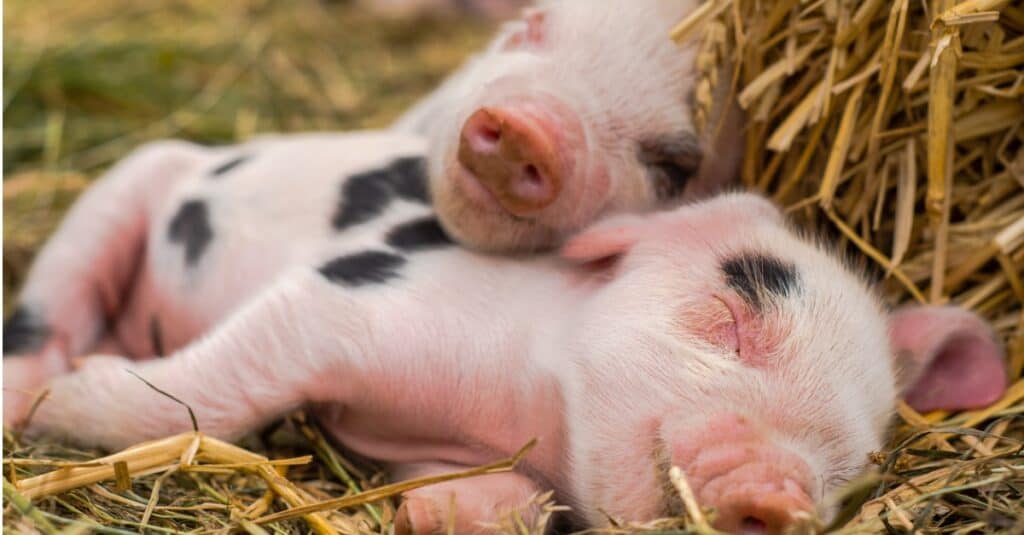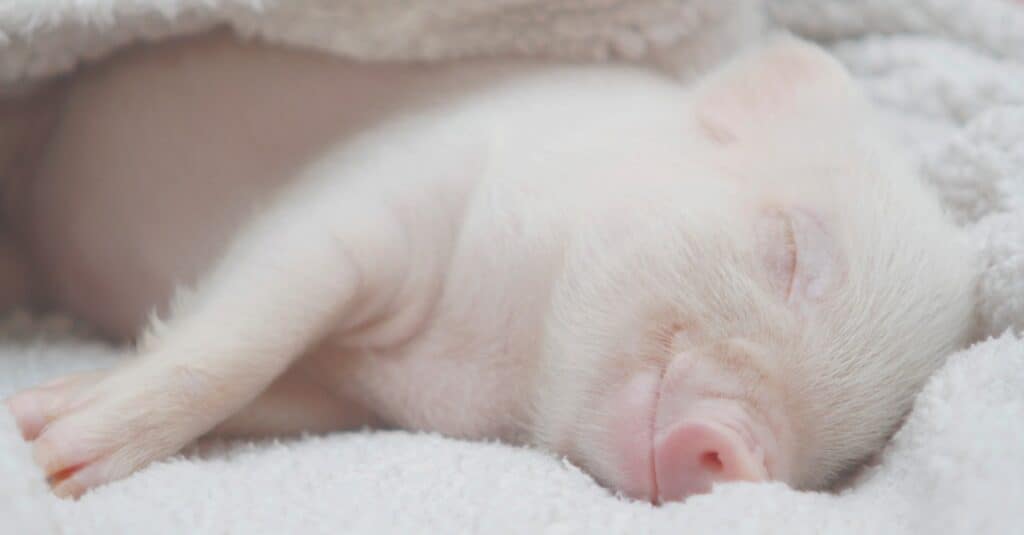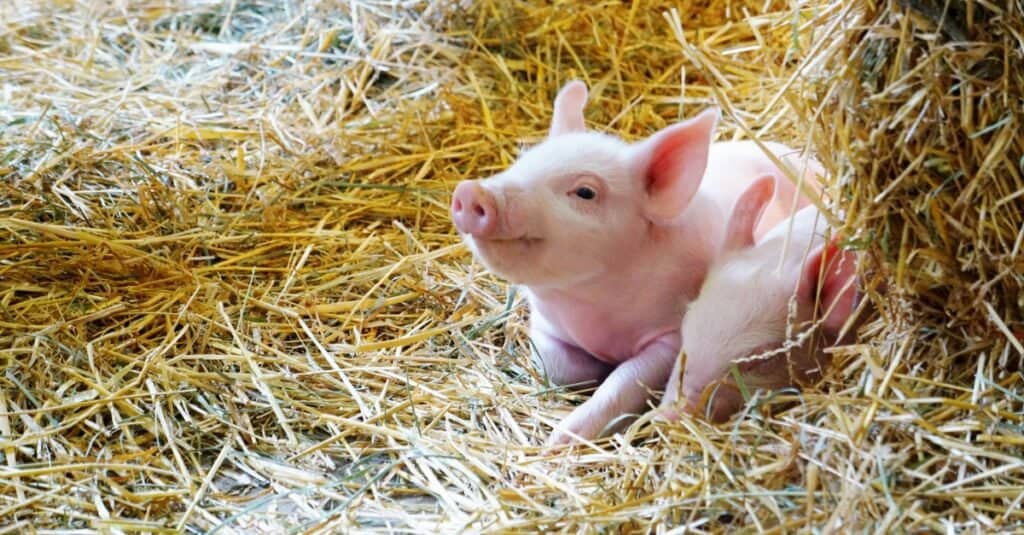What Is the Name of a Baby Hog Called
Baby Pig: 5 Piglet Pictures and 5 Facts
Published: November 30, 2021
iStock.com/Kseniia Derzhavina
Baby pigs are so adorable but did you know they play an important role in heart surgeries? Not only are they helpful with medical treatments, but you can also teach them to do just about anything you could imagine, as long as you're armed with a tasty treat.
Baby pigs are very interesting, so let's jump into five facts and pictures to learn more about them!
#1: Piglets Can't Sweat


Unlike humans, pigs are not able to help cool themselves off by perspiring. Instead of sweating, pigs tend to control their breathing, and they like wallowing in mud to cool themselves down.
Since they don't have sweat glands, they rely on outside things to help them regulate their body temperature. Domestic pigs are often spoiled with a mist system to keep them nice and cool all year round.
#2: Baby Pigs Can Learn To Do Tricks


Pigs have a reputation for being brilliant animals, but I bet you didn't know that they can learn tricks. Pigs can learn tricks faster than dogs and can learn to come when their name is called at around two or three weeks old.
You might think a pig is an unlikely animal to train, especially since they have a reputation for being lazy animals. However, pigs are among the smartest animals on Earth. In fact, they are #4 for most intelligent animals, defeated only by chimps, dolphins, and elephants. That's a smart cookie!
Other popular tricks to teach your baby pig are shaking hooves, spinning, sitting, and staying. Baby pigs are very motivated by food, so by showing them their favorite snack and asking them to complete a small task, they're more likely to complete it to earn their snack.
#3: Some Pigs Grow Up to Save Human Lives


I bet you didn't know that pigs are translational research models. That means that when a doctor tests a medical treatment on a baby pig and it's successful, it's likely to be successful on a human too.
Not only can baby pigs grow up to help in the discovery of medical treatments, but pigs have also been known to be used in the operating room. Pig's skin, for example, has been used for skin grafts in burn patients. Doctors have also seen success using pig pancreas cells to improve the pancreas function in diabetic adults. Lastly, pig heart valves are commonly used in surgeries on humans. The valves have roughly the same sizes and functions as human heart valves, making them viable for transplants.
Pigs that are intended for medical use are bred and raised specifically for this purpose. Researchers are even working on modifying the gene system in some pigs to be more compatible with the human body.
Who knew pigs could make such an important impact on the health care system?
#4: Baby Pigs Are Neat Freaks


Have you ever described a messy space as a pigsty? Even though pigs have a reputation for being messy animals, they actually prefer to keep their living areas clean. In fact, if their living area is large enough, they will keep their living space separate from their toilet area.
Despite the phrase "pig out" while eating, pigs are also very clean eaters. They tend to take their time to savor their food rather than scarfing it down and being messy. This just goes to show that when compared to other farm animals, pigs are among the tidiest.
#5: Baby Pigs Learn To Wag Their Tails


Like dogs, pigs love to wag their tails when they're happy or content. One of the main times you'll see them doing this is when they're being fed or playing with their friends and family. Pigs are social creatures and clearly very intelligent as well!
FAQs (Frequently Asked Questions)
How much do baby pigs weigh?
At birth, piglets can weigh anywhere from 3 to 5 pounds. In the first eight weeks of their lives, baby pigs should gain around 30 more pounds. At 12 weeks old, they can weigh up to nearly 12 times their birth weight.
What do baby pigs eat?
Baby pigs nurse from their mothers until they're about 9 to 10 weeks old, when solid foods are introduced. Solid foods that pigs enjoy include fruits, vegetables, and some insects.
Where do baby pigs live?
Baby pigs are born requiring their mothers' nutrients; therefore they must stay close by them for at least the first two months of life. Pigs usually live in grassy areas that have good shelter for hiding out from predators, produce vegetation for food, and that have a constant source of drinking water.
What are baby pigs called?
Baby pigs are called piglets. The adult female pig who have had a litter of piglets is called a sow, and the female pig who has not is called a gilt. Pig refers to a young pig that is not yet an adult but has passed the age of being a piglet. The adult male pig is called a hog.
What Is the Name of a Baby Hog Called
Source: https://a-z-animals.com/blog/baby-pig-5-pictures-5-facts/
0 Response to "What Is the Name of a Baby Hog Called"
Post a Comment